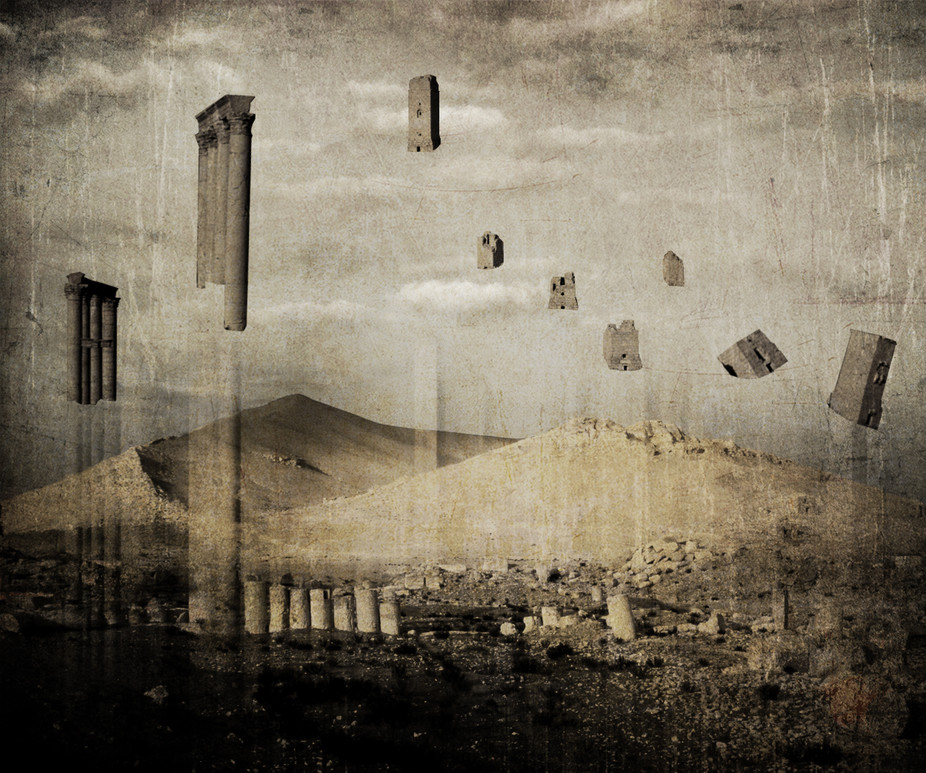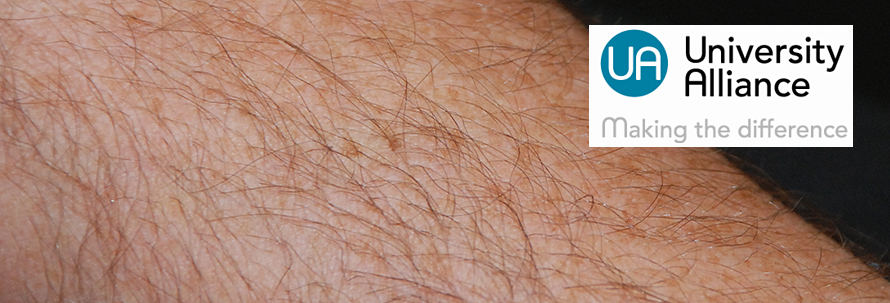Designated a World Heritage Site by UNESCO (United Nations Educational, Scientific and Cultural Organization), Palmyra dates back to Second Century BCE (before the common era) as UNESCO’s Site of Palmyra webpage indicates,
An oasis in the Syrian desert, north-east of Damascus, Palmyra contains the monumental ruins of a great city that was one of the most important cultural centres of the ancient world. From the 1st to the 2nd century, the art and architecture of Palmyra, standing at the crossroads of several civilizations, married Graeco-Roman techniques with local traditions and Persian influences.
First mentioned in the archives of Mari in the 2nd millennium BC, Palmyra was an established caravan oasis when it came under Roman control in the mid-first century AD as part of the Roman province of Syria. It grew steadily in importance as a city on the trade route linking Persia, India and China with the Roman Empire, marking the crossroads of several civilisations in the ancient world. A grand, colonnaded street of 1100 metres’ length forms the monumental axis of the city, which together with secondary colonnaded cross streets links the major public monuments including the Temple of Ba’al, Diocletian’s Camp, the Agora, Theatre, other temples and urban quarters. Architectural ornament including unique examples of funerary sculpture unites the forms of Greco-roman art with indigenous elements and Persian influences in a strongly original style. Outside the city’s walls are remains of a Roman aqueduct and immense necropolises.
Discovery of the ruined city by travellers in the 17th and 18th centuries resulted in its subsequent influence on architectural styles.
Until recently Palmyra was occupied by ISIS or ISIL or IS (depending on what the group is being called today). A March 31, 2016 news item on phys.org presents a perspective on the city and cultural heritage in a time of strife,
The destruction at the ancient city of Palmyra symbolises the suffering of the Syrian people at the hands of the terrorist group known as Islamic State (IS). Palmyra was a largely Roman city located at a desert oasis on a vital crossroad, and “one of the most important cultural centres of the ancient world”. Its remarkable preservation highlighted an intermingling of cultures that today, as then, came to stand for the tolerance and multiculturalism that pre-conflict Syria was renowned for -– tolerance that IS seeks to eradicate.
A March 31, 2016 essay by Emma Cunliffe (University of Oxford) for The Conversation, which originated the news item, expands on the theme,
Early in the conflict, the area was heavily fortified. Roads and embankments were dug through the necropolises and the Roman walls, and the historic citadel defences were upgraded. Yet the terrorists occupied and desecrated the city from May 2015, systematically destroying monuments such as the Temple of Baalshamin, the Temple of Bel, seven tower tombs, a large Lion goddess statue and two Islamic shrines. They ransacked the museum, tortured and executing the former site director Khaled al-Asaad in search of treasure to sell. According to satellite imagery analysis the site was heavily looted throughout it all.
Now the city has been recaptured, the first damage assessments are underway, and Syrian – and international – attention is already turning to restoration. This work will be greatly aided by the Syrians who risked their lives to transport the contents of the Palmyra museum to safety. The last truck pulled out as IS arrived, with bullets whizzing past.
There is a contrasting view as to how much destruction occurred from a March 29, 2016 essay by Paul Rogers (University of Bradford) for The Conversation,
Syrian Army units have taken back the ancient city of Palmyra from Islamic State. The units are now also trying to extend their control to include al-Qaryatain, to the south west of Palmyra, and Sukhnah, to the north east.
There are indications that the damage done to the ancient world heritage site which lies just outside Palmyra has been much less than feared. It may even have been limited to the destruction of two or three individual ruins – certainly important in their own right but just a small part of a huge complex that stretches over scores of hectares.
Written before some of the latest events, Rogers’ perspective is one of military tactics and strategy which contrasts with Cunliffe’s cultural heritage perspective. Like the answers to the classic question ‘Is the glass is half empty or is the glass is half full?’, both are correct, in their way.
Getting back to the cultural heritage aspect, Cunliffe outlines how Syrians and others in the international community are attempting to restore Palmyra, from her March 31, 2016 essay (Note: Links have been removed),
Even as they were displaced, Syrians have worked to keep a detailed memory of the city alive. Syrian artists created artworks depicting the destruction. In a Jordanian camp, refugees made miniature models of the city and other cultural sites, even measuring out the number and position of Palmyra’s columns from photographs.
The international community is also playing its part. Groups like UNOSAT [UNITAR’s Operational Satellite Applications Programme], the UN’s satellite imagery analysts have used satellite imagery to monitor the damage. On the ground, Syrian-founded NGOs like APSA [Association for the Protection Syrian Archaeology] have linked with universities to assess the site. Groups such as NewPalmyra and Palmyra 3D Model are using the latest technology to create open-access 3D computer models from photographs.
Others have gone even further. The Million Image Database Project at the Oxford Institute for Digital Archaeology distributed cameras to volunteers across the Middle East to collect 3D photos of sites. As well as creating 3D models, they will recreate full-scale artefacts, sites, and architectural features using their own cement-based 3D printing techniques. This will start with a recreation of the arch from Palmyra’s Temple of Bel, due to be unveiled in London in April 2016.
Here’s an artistic representation of the destruction,
Of course, there are some ethical issues about the restoration being raised, from Cunliffe’s March 31, 2016 essay (Note: Links have been removed),
It wouldn’t be the first time such large-scale restoration has been undertaken. Historic central Warsaw, for example, was destroyed during World War II, and was almost completely reconstructed and is now a World Heritage site. Reconstruction is costly, but might be accomplished more quickly and cheaply using new digital techniques, showing the world that Syria values its cultural heritage.
But many argue that 3D printing fails to capture the authenticity of the original structures, amounting to little more than the Disneyfication of heritage. They also point out that the fighting is still ongoing: 370,000 Syrians are dead, millions are displaced, and perhaps 50%-70% of the nearby town has been destroyed. Given the pressing humanitarian needs, stabilisation alone should be the priority for now.
Rebuilding also fails to redress the loss caused by the extensive looting of the site, focusing only on the dramatically destroyed monuments. Perhaps most importantly, its worth asking whether returning Palmyra exactly to its pre-conflict state denies a major chapter of its history? There needs to be a wide-ranging discussion on the priorities for the immediate future and the nature of any future reconstruction.
While I grasp most of the arguments I’m not sure why 3D printing raises a greater ethical issue, “… many argue that 3D printing fails to capture the authenticity of the original structures, amounting to little more than the Disneyfication of heritage … .” Couldn’t you say that about any form of restoration? Certainly, I was disconcerted when I saw the Sphinx in Cairo in real life where the restoration is quite obvious from angles not usually seen in tourist pictures.
More tangentially, how big is the 3D printer? If memory serves, building materials from ancient times were often large blocks of stone.
Getting back to the point, both Cunliffe’s and Rogers’ essays are worth reading in their entirety if you have the time. And since those essays have been written there has been an update for Associated Press in an April 1, 2016 article by Albert Aji on phys.org. Apparently, the IS retreat included time to plant thousands of mines throughout Palmyra with trees, doors, animals and more being booby-trapped and, now, being detonated by the Syrian army.
One final comment, The booby-trapping reminded me of a scene in the English Patient (movie) when the allies have won the war, the Germans have withdrawn and British and Canadian soldiers have liberated a town in Italy. They celebrate that night and one exuberant Brit soldier climbs a flagpole (I think) and is killed because the Germans had booby-trapped the top of the flagpole. Some years ago, a friend of mine was peacekeeper in Croatia and he said that everything was booby-trapped, flagpoles, mailboxes, cemetery markers, etc. He never said anything much more about but I have the impression it was demoralizing and stressful. I think the discussion about restoration and the artwork produced by Syrians in response to the happenings in Palmyra are an important way to counteract demoralization and stress. Whether money should be spent on restoration or all of it dedicated to pressing humanitarian needs is a question for other people to answer but a society without art and culture is one that is dying so it is heartening to note the vibrancy in Syria.
ETA April 19, 2016: Palmyra’s Arch of Triumph has been successfully replicated and is standing in London, UK according to an April 19, 2016 news item on phys.org. The replica is about 2/3 the size of the original. No reason for the size change is given in the Associated Press article. The arch scheduled to remain in London for a few more days before moving to New York, Dubai, and other destinations before arriving in Palmyra.

